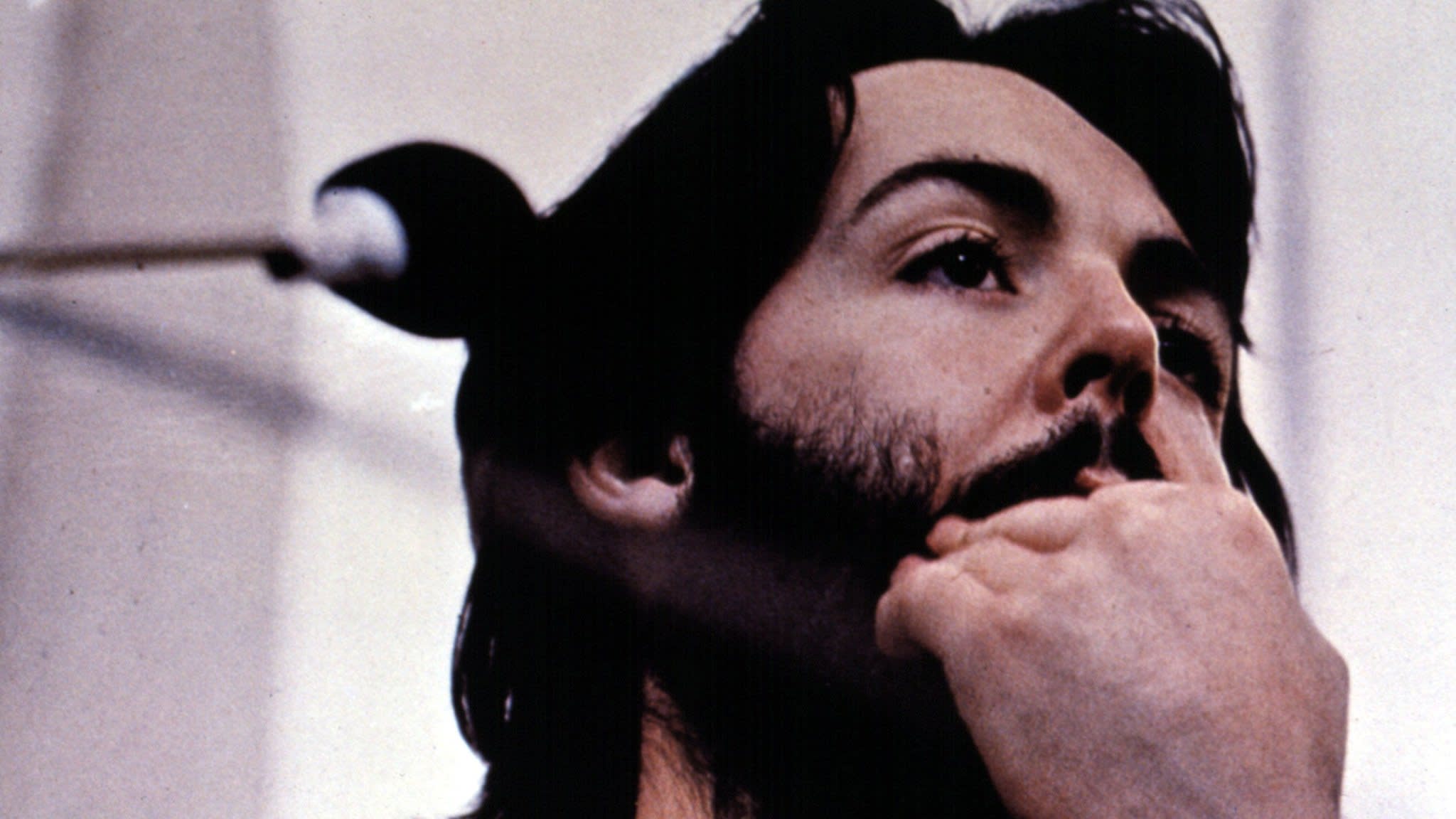ig.ft.com
The Beatles’ Golden Slumbers: from Abbey Road to the John Lewis Christmas advert
Covered by John Denver and Neil Diamond, Will Young and Mumford & Sons, the song is a touchstone for bands trying to show their sensitivity and maturity
by Jude Rogers
FINANCIAL TIMES
December 19 2017

Paul McCartney in1970
Many Beatles tracks have had interesting afterlives, and “Golden Slumbers” is one of them. It sits towards the end of the last album they made together, 1969’s Abbey Road, but it is less a song than a segment, a tender part of the medley at the end of side two. In one minute and 31 seconds, it evokes nostalgia, innocence and loss in its lyrics and melody, about the impossibility of getting back home (“Once there was a way…”), and the singing of lullabies to a child (“Sleep, pretty darling, do not cry”). In recent years, it has soundtracked prominent emotional moments in children’s films, notably 2006’s Happy Feet and 2016’s Sing, and this winter it is covered by Mercury Music Prize-winning band Elbow on the UK’s biggest Christmas advert (for retail giant John Lewis). It also has its own fascinating, formative story.
On July 2, 1969, Paul McCartney was recording in Abbey Road without John Lennon, who had been in a car crash the previous day. So had Lennon’s son Julian, his wife Yoko, and her daughter, Kyoko; all of them were in hospital in the Scottish Highlands, recovering from facial injuries or shock (three months later, Yoko would miscarry her and John’s baby, their second loss in two years). Into this emotional mix came Paul McCartney. The previous October, he had been visiting his 62-year-old father Jim on the Wirral, in a house he had bought for him. One night, he was playing idly on the piano and found a music book belonging to his eight-year-old stepsister, Ruth. (Paul’s beloved mother Mary died of cancer in 1956; his father married a young widow in 1964, and adopted her daughter.)
Lullabies were popular in sheet music in the early 20th century, inspired by the success of Johannes Brahms’ Wiegenlied and Chopin’s Opus 57. McCartney came across a tune called “Cradle Song”. “I can't read music and I couldn't remember the old tune,” McCartney recalled in The Beatles’ 1995 Anthology film. “So I started just playing my tune to it… I liked the words so I kept that, and it fitted with another bit of song I had.” That other song was “Carry That Weight”, the next part of the Abbey Road medley, into which “Golden Slumbers” neatly slides.
“Golden Slumbers” took its words from a song by the playwright Thomas Dekker which was couched in his 1603 play, Patient Grissil. This tells the story of poor basket-weaving woman courted and married by a wealthy marquess, who then subjects her to punishing psychological trials (earlier versions of this story feature in Chaucer’s Clerk’s Tale and Boccaccio’s Decameron). One involves taking their baby away, but later the child is returned, the lullaby being sung to the baby by Grissil’s father, Janiculo, to calm its cries. As he plays along on his lute, Janiculo’s words run slightly differently to McCartney’s. “Golden slumbers kiss” the baby’s eyes rather than “fill” them. “Pretty wantons” are urged not to cry, rather than “a darling”. The lines “once there was a way to get back homeward/Once there was a way to get back home” do not feature, however: these were McCartney’s alone. Here was a man thinking about the comfort of families and homesteads as he sat by his father’s piano, in the dying days of his band.
Sadness lurks in “Golden Slumbers”’ melody from its very beginning. A piano figure pivots between a chord that suggests a major key, before dropping in a mournful lower sixth. Unusually, the strings also come in on this note, striking a strange, melancholy mood before its nursery-rhyme beauty lifts off.
The song’s impact on wider pop culture was instant: John Denver and Booker T & The MG’s quickly covered it. Neil Diamond played it regularly on tour. It has also become a musical touchstone for bands trying to show their sensitivity and maturity, with Mumford & Sons and Will Young recording it for radio sessions in the past decade. Its autumnal mood carries with it a knowledge of how time passes, which suits both the fabric of children’s films and the development of artists’ careers. This year’s John Lewis TV ad features a small boy who befriends a monster under his bed.
“Golden Slumbers” mourns those moments where we are looked after as children that we can never get back, before adulthood hits; then we have “carry that weight/a long time”. The year after he recorded “Golden Slumbers”, McCartney left The Beatles. He moved to southwest Scotland, to bring up his own children. He found a way to get back home.
We like to hear from our readers. Which version of ‘Golden Slumbers’ do you think is best? Do you have memories of the song? Let us know in the comments below.
‘The Life of a Song: The fascinating stories behind 50 of the world’s best-loved songs’, edited by David Cheal and Jan Dalley, is published by Brewer’s.
Music credits: EMI Catalogue, Polydor Records, Decca (UMO), Decca Music Group Ltd., RCA/Legacy, UMC (Universal Music Catalogue)
Picture: Alamy

Paul McCartney - Golden Slumbers/Carry That Weight/The End (Sao Paulo, Brazil 2017)


Este comentario ha sido eliminado por el autor.
ResponderEliminarThe version I'm familiar with and I really love, love, ;love is the one on the Abbey Road record. I have always felt a jolt in ky heart every time the Phrase " Boy, you're going to carry that weight a long time"
ResponderEliminarI know that encloses much of the sadness I see behinds Paul's eyes.
I'm glad the Scotland years were happy ones where and when he had the taste of "Home" and the laughter of kids and the warmth of his wife by his side fighting any monsters that may come their way together.
In my dreams, Paul and I are confidants, chums extraordinaires... and we seat in front of a cozy fire sipping hot tea/coffee and baring our souls of all that is painful and joyful : Crying and laughing, playing and finding the rest of untold answers gazing at eachother's eyes.